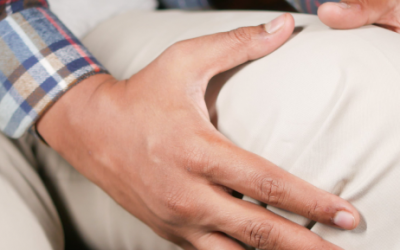What is Sciatica?
Sciatica is referring to irritation of the sciatic nerve (runs from your low back to your feet). Usually, this is experienced as pain radiating down the leg. In about 90% of cases, sciatica is caused by a herniated or slipped disc leading to nerve root compression. Other pathologies such spinal degeneration and stenosis may lead to sciatica as they are causing narrowing of the pathways through which the sciatic nerve travels.
“Sciatica is pain down the leg due to irritation of the sciatic nerve”
Common symptoms are unilateral leg pain greater than low back pain, pain radiating to foot or toes sometimes numbness and tingling pins and needles sensation may be felt in the same distribution. Personal factors that may predispose to such symptoms include age (peak 45-64 years), increasing risk with height, Smoking and mental stress. Also, occupational factors such as strenuous physical activity including frequent lifting, especially while bending and twisting, driving, may also be contributing to the development of back and leg pain. In the majority of cases, people improve within 4-8 weeks with appropriate care depending on the severity.
“Contact 999 if you have loss of control of both leg and feet; numbness or tingling in the genitals or around or you suddenly can’t pee or control when you pee or poo. This may indicate a more serious problem.”
What can you do?
- Stay as active as you can tolerate
- Avoid bed rest
- Avoid activities that aggravate your symptoms
- Speak to your pharmacist about pain medications
- Contact your local osteopath to assess your symptoms.
How can we help: Explain – Treat – Advice – Return to daily activities.
We can explain and advise on your condition and how to actively manage your symptoms. We believe that educating our patients is the fundamental step towards their own recovery. It also helps to take away any unnecessary stress and anxiety caused by their condition.
We offer an all-rounded tailored treatment to help reduce your pain levels and facilitate your recovery.
We will provide you with therapeutic exercises and guide you throughout your recovery process to start returning back to normal daily activities as soon as possible.
We believe that prevention is always a better option than cure! Thus we help you create personal prevention strategies to avoid a similar situation in the future.
We take a patient-center approach where we will refer you for scans, other tests or to an appropriate consultant if your condition requires further investigation.
How to prevent Sciatica?
Sciatica has quite a few aetiologies, however, there are simple steps you can do to help reduce your injury risk.
- Practicing correct posture when standing, walking and sitting – many back injuries are caused by improper posture.
- Avoid smoking – as it is linked with back pain.
- Practice safe lifting techniques – many back related injuries are caused by improper lifting techniques. Use your legs and don’t lift and twist. Always ask for help for heavy objects.
- Maintain a healthy weight – additional weight adds extra stress to the spine.
- Being physically active – core strength helps to support the spine
See also:
- Slipped Disc or Disc Herniation
- Exercises for Back Pain
- 3 Steps to deal with Back Pain
- 8 Tips to Avoid Neck Pain
Sources:
Diagnosis and treatment of sciatica. BMJ. 2007 Jun 23; 334(7607): 1313–1317. B W Koes, M W van Tulder.
https://www.nhs.uk/conditions/sciatica/



